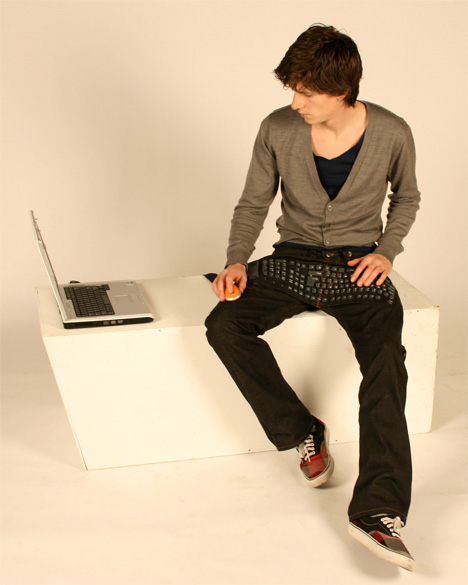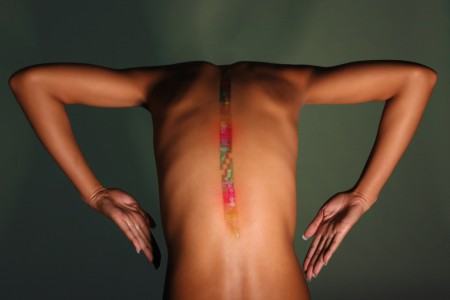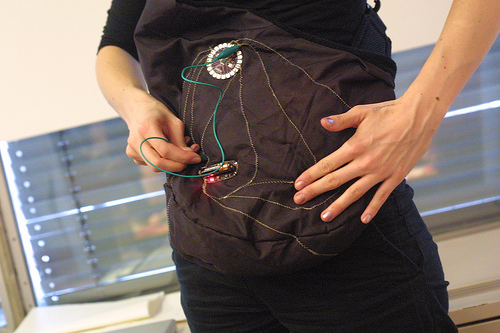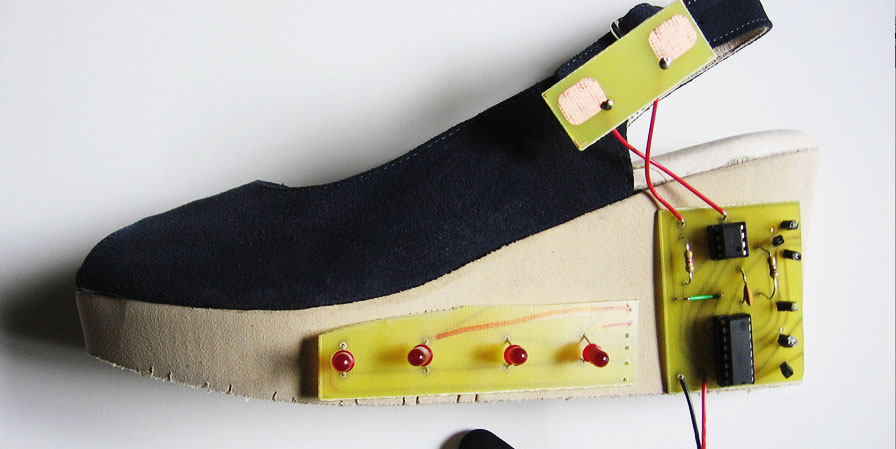 Erik De Nijs designed jeans with an integrated soft keyboard, called Beauty and the Geek. The pants have a softkeyboard integrated across the front so when you sit, it is naturally located where you would place an external keyboard. A mouse is conveniently connected to the back pocket and there are a pair of "crotch rocking" speakers located in the knees.
Erik De Nijs designed jeans with an integrated soft keyboard, called Beauty and the Geek. The pants have a softkeyboard integrated across the front so when you sit, it is naturally located where you would place an external keyboard. A mouse is conveniently connected to the back pocket and there are a pair of "crotch rocking" speakers located in the knees.
The absurdity and humor of the keyboard pants capitalizes on "Geek" culture and fashion. Described by Vous Pensez, It "is the perfect solution for Googling quick exits while running from the fashion police." The most hilarious function is a gamers joystick located behind the zipper. By placing it there, Nijs forces the wearer to put their hand down their pants to control the game, making a comment on game culture and the persona of gamers.
Nijs could have prototyped this garment by attaching hard plastic controllers to a pair of pants. Instead, he used a variety of soft-switches and controllers that are becoming more readily available on the market, such as Fibretronic's wearable remote control and ElekTex's fabric keypads, to seamlessly integrate into the garment. Aside from the humorous implementation, the result offers a new platform for interaction that is soft, flexible, and technically functional.
Additional info at talk2myshirt.




